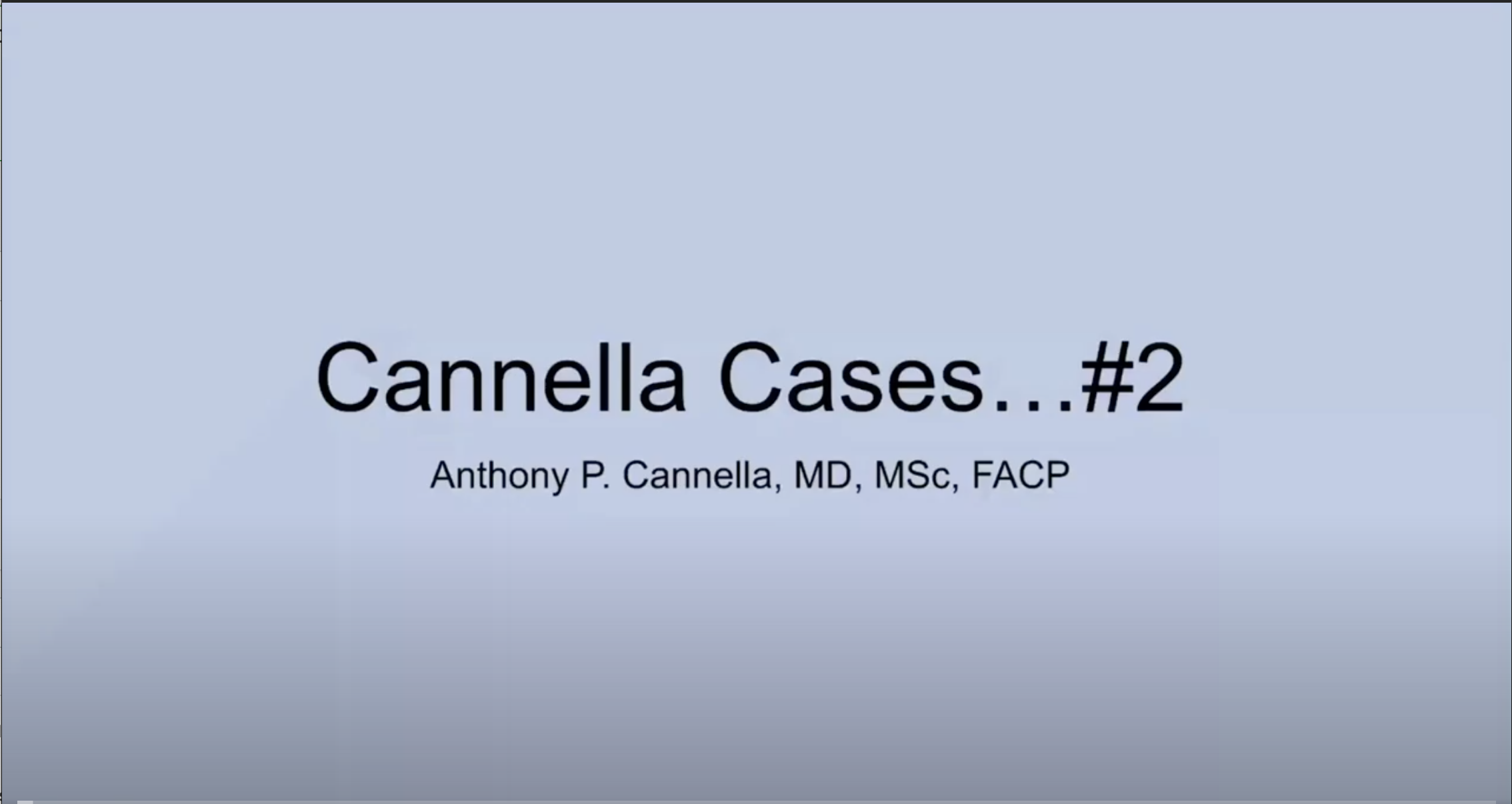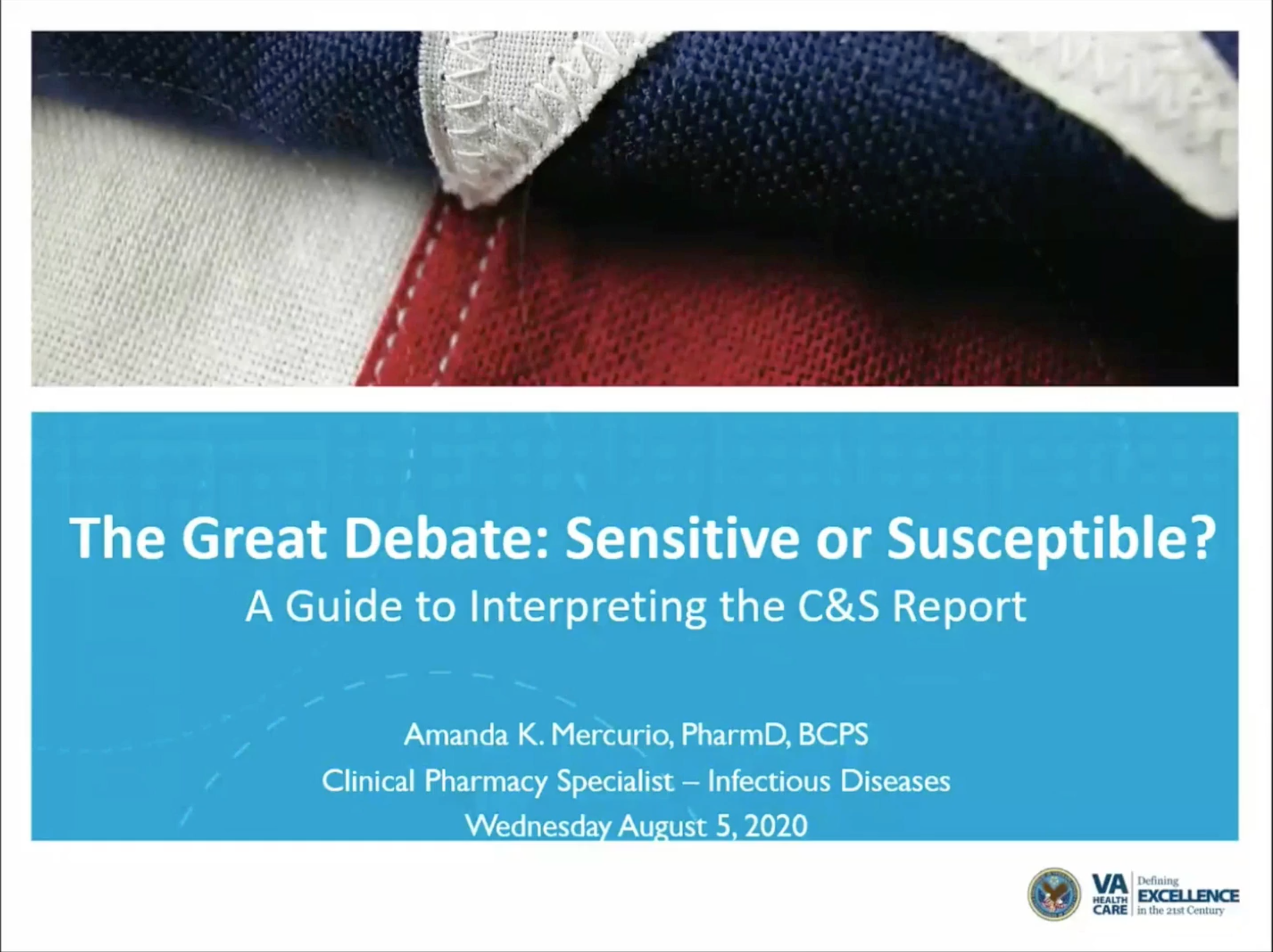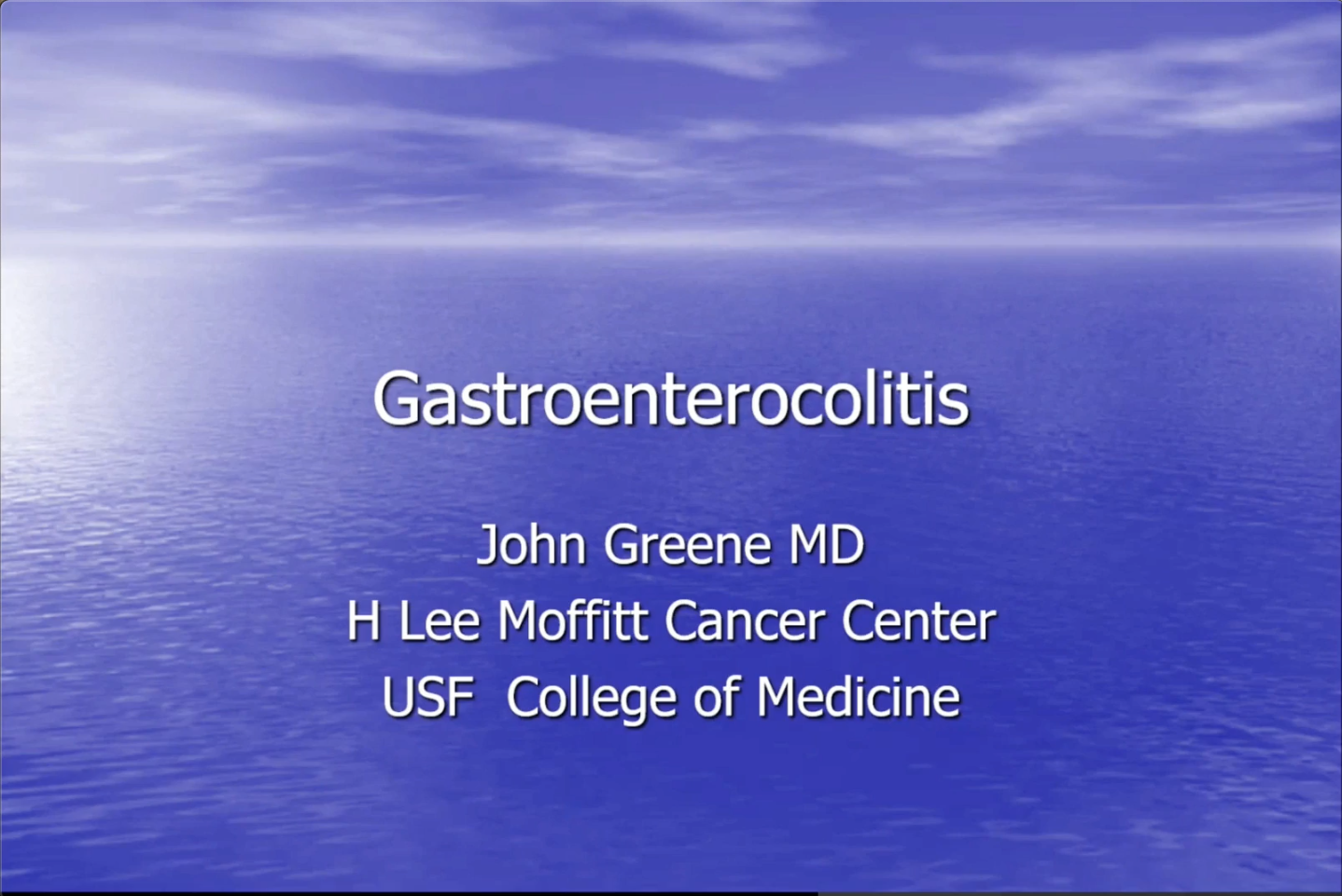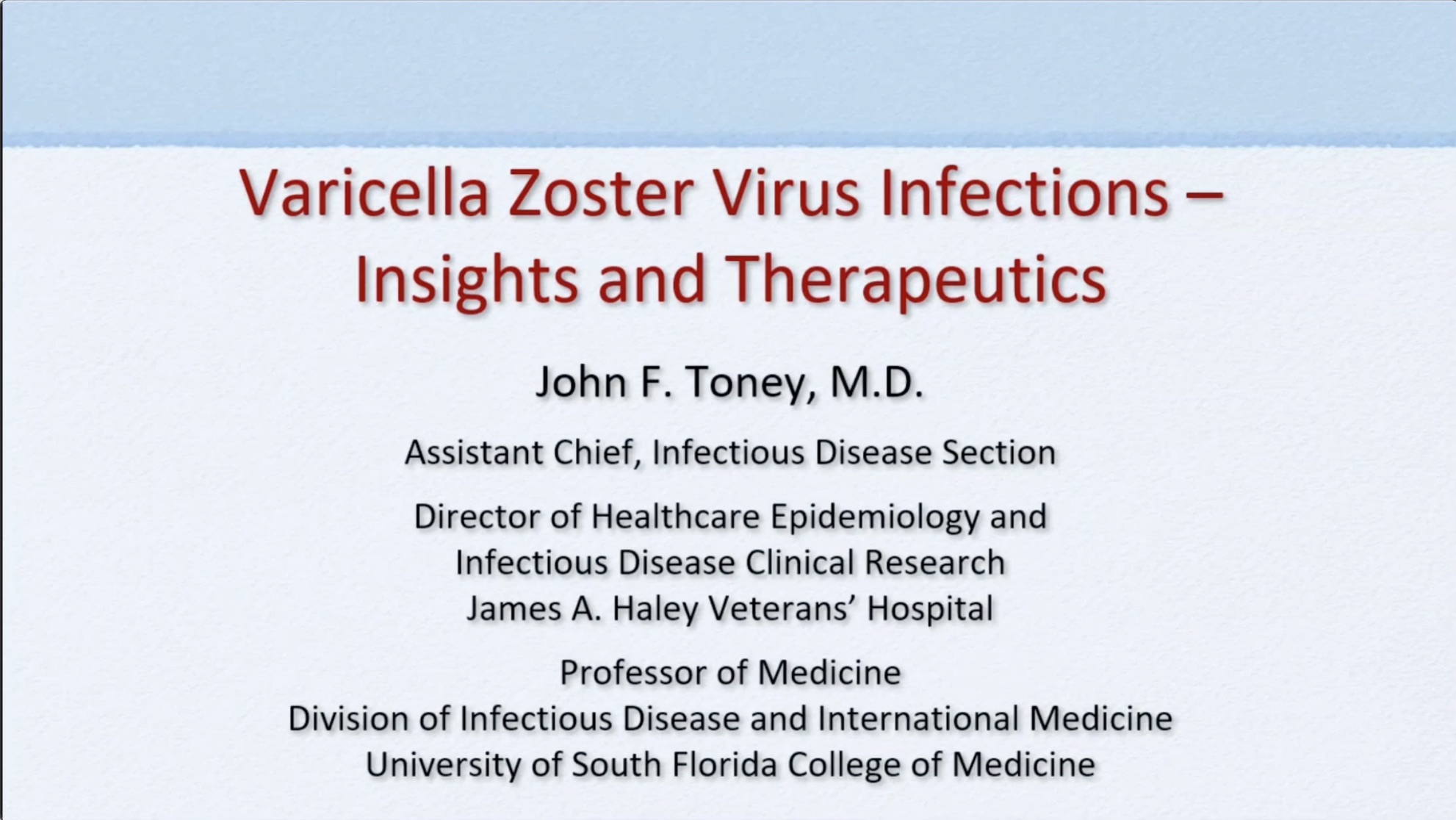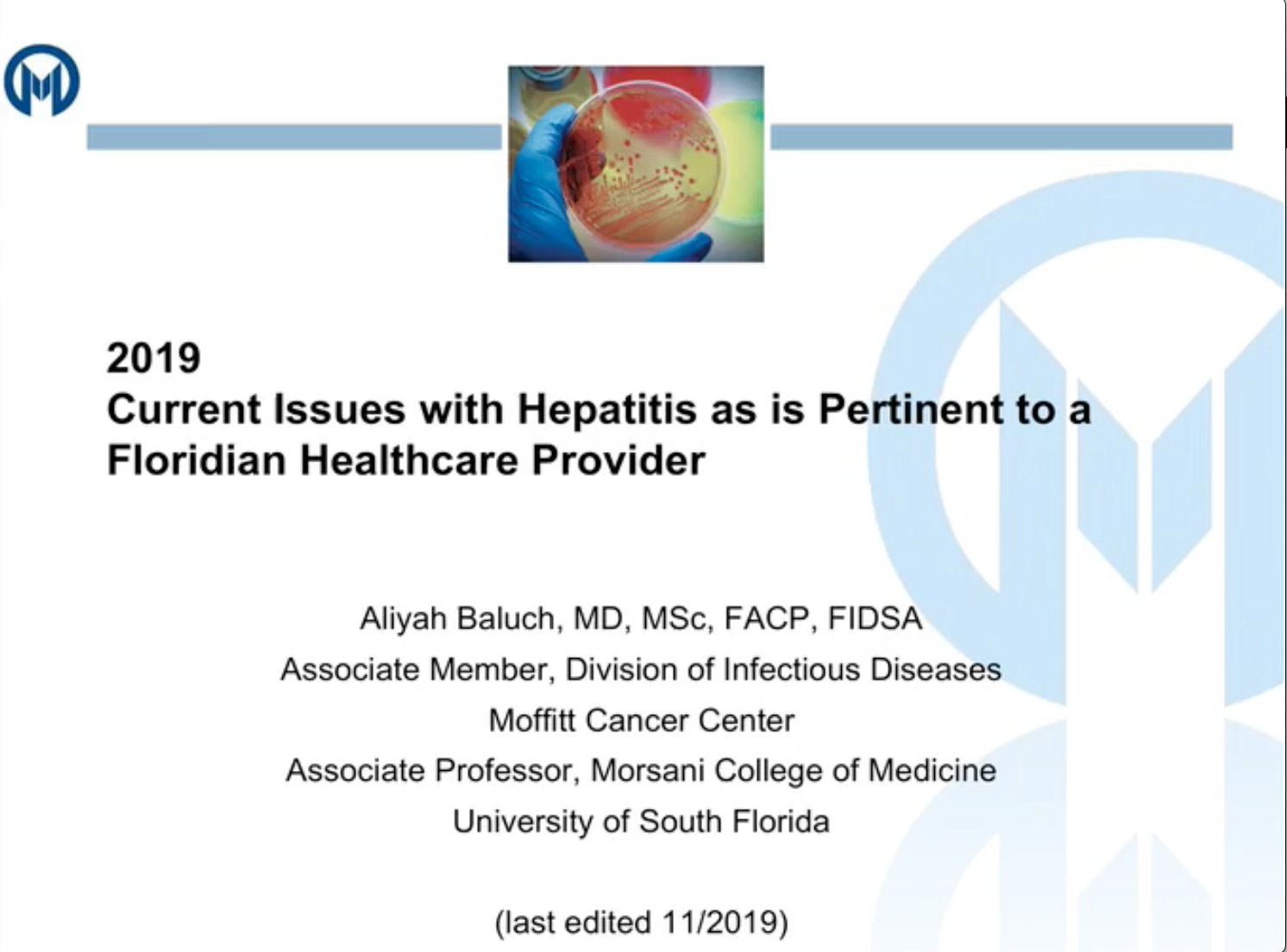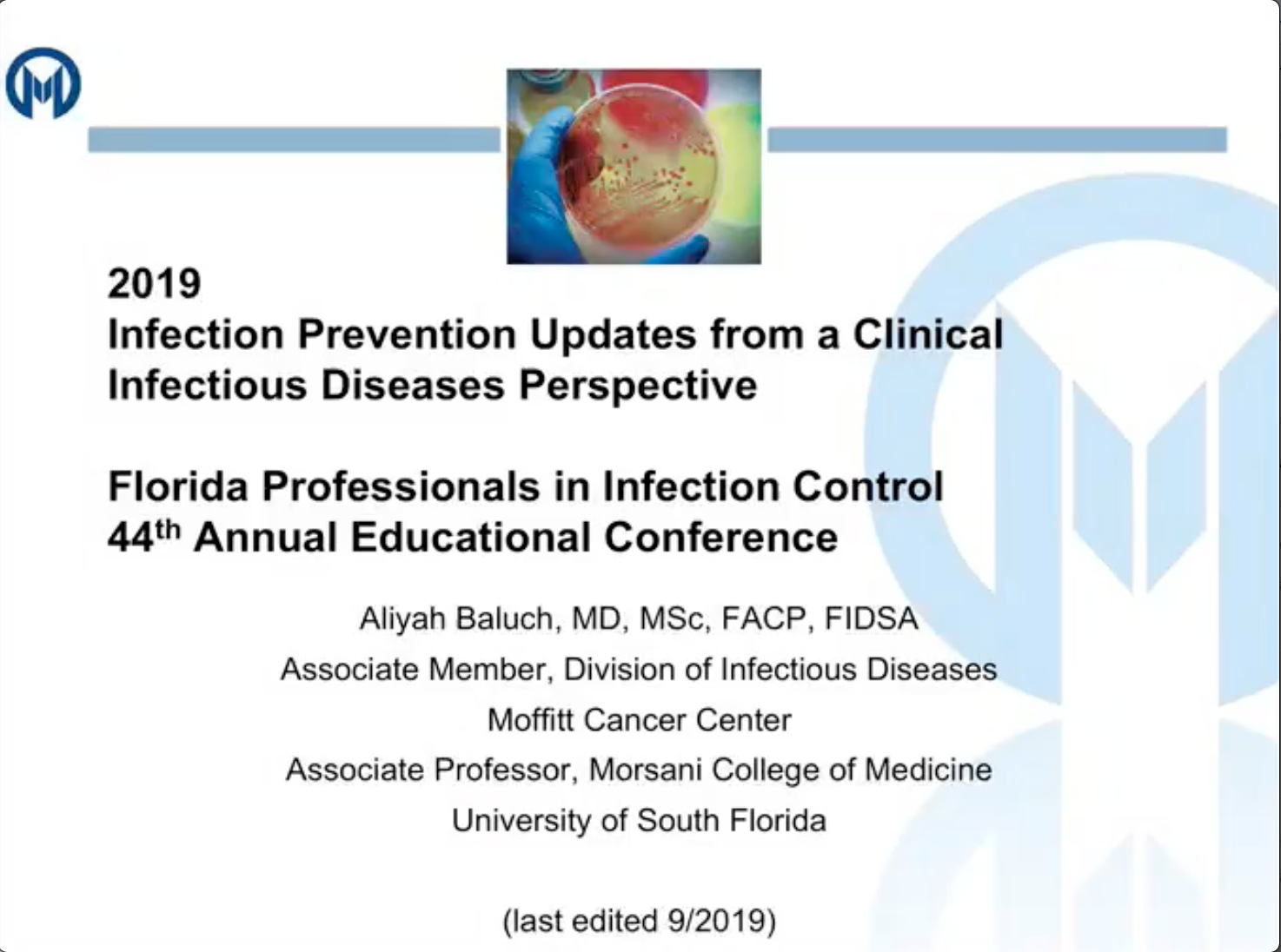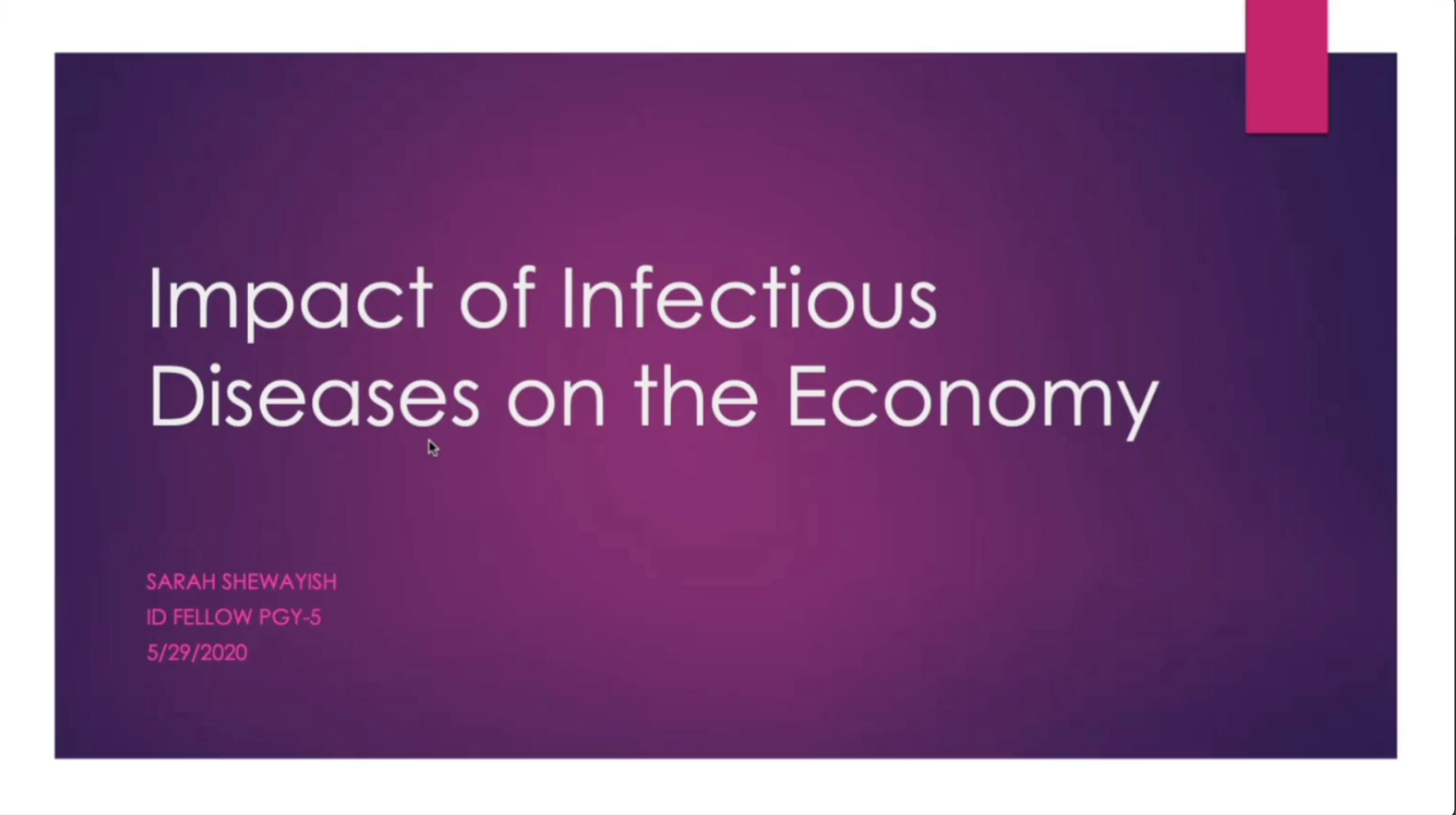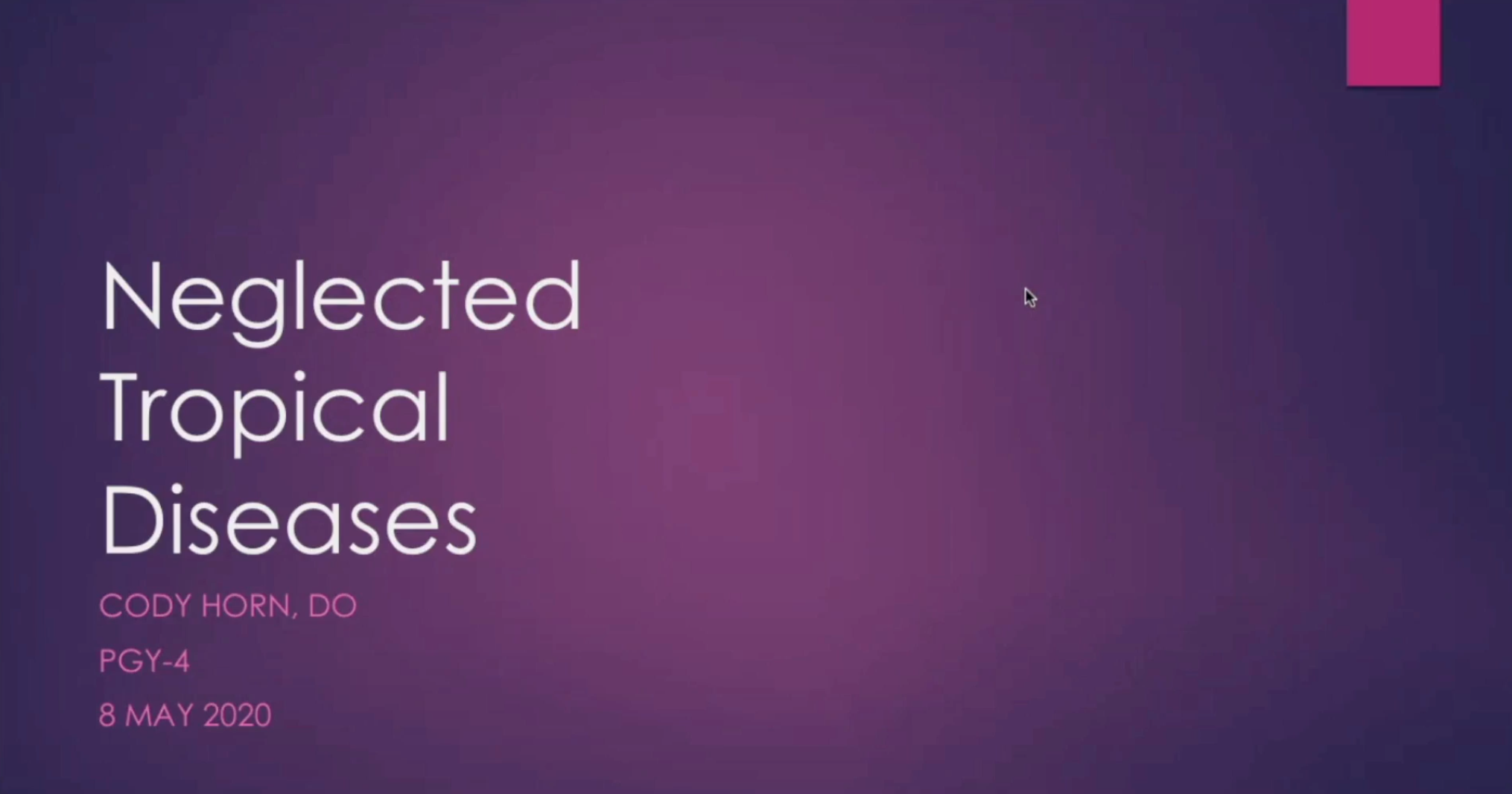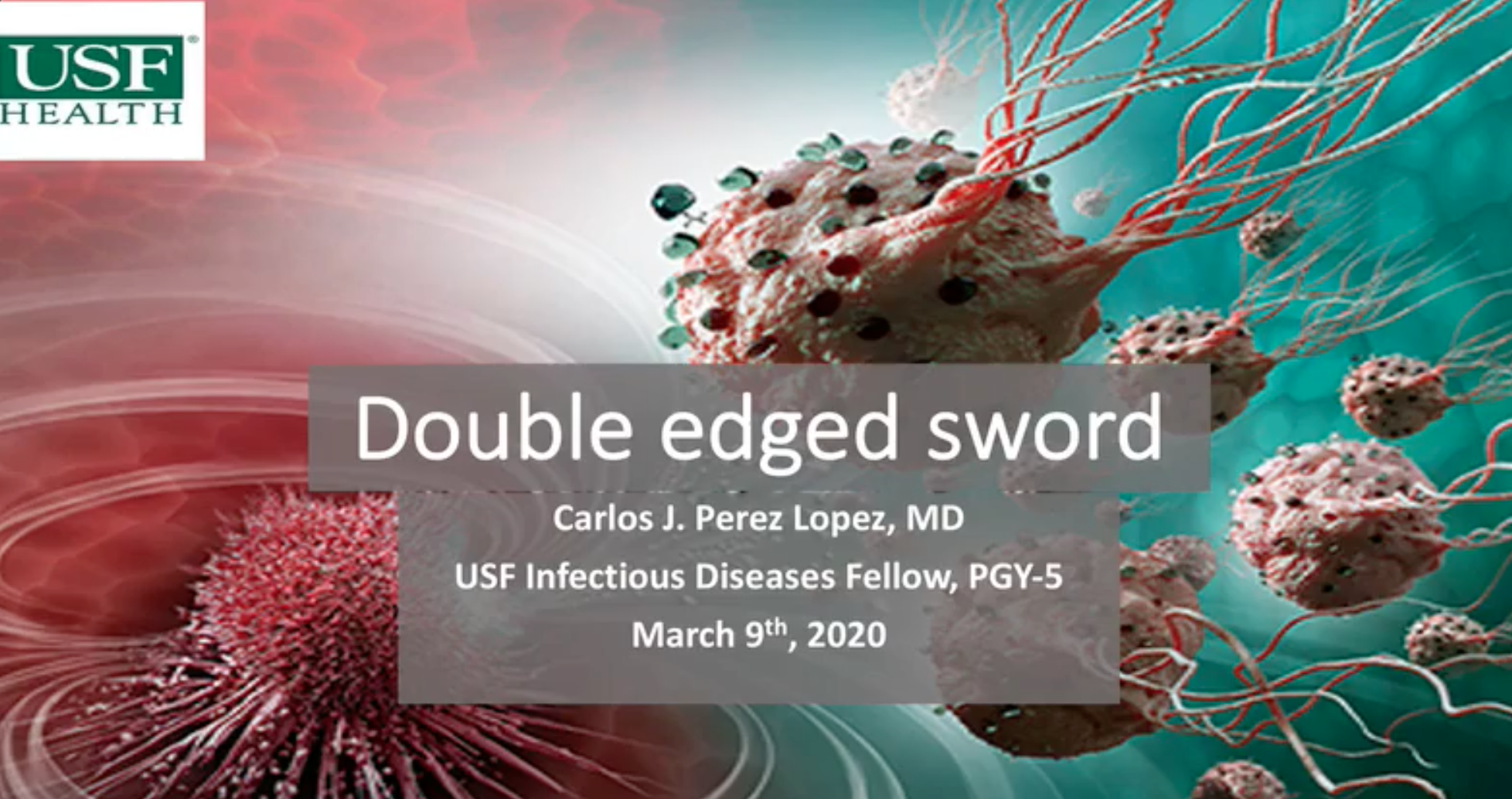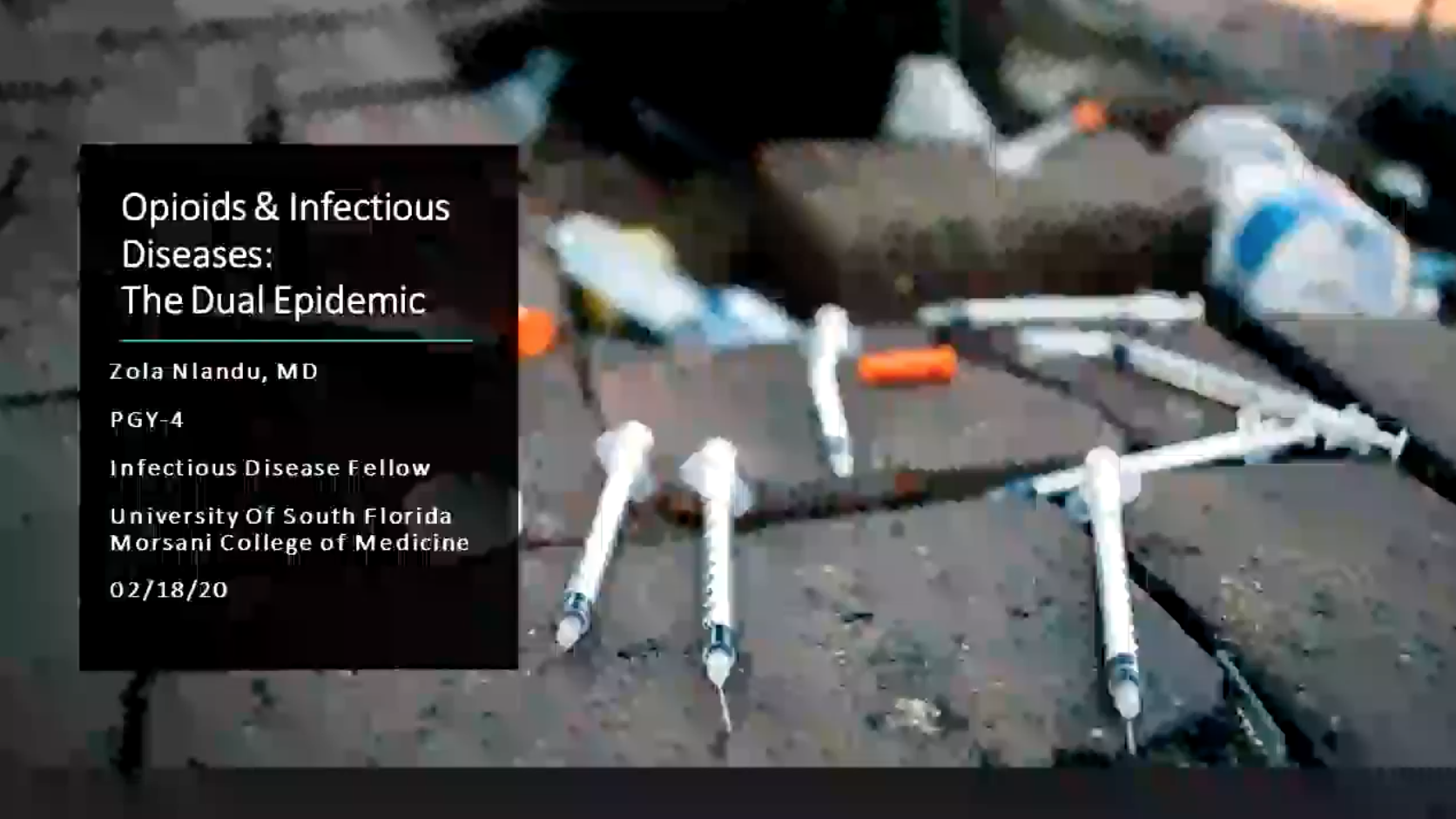Dr. Anthony Cannella, Associate Director of Epidemiology at the James A Haley Veterans Hospital, presents a series of clinical cases from his years in infectious diseases practice. The cases are presented in a visual, interactive format. From a virtual session originally recorded on August 19, 2020.
Archives
The Great Debate: Sensitive versus Susceptible
Dr. Mercurio reviews antimicrobial susceptibility testing methods and explains how this data reported with culture results can be best used to make informed antibiotic treatment decisions. Dr. Mercurio begins by discussing the difference between MIC and MBC, and the misconceptions about MIC values for different antibiotic agents. Next, she reviews recent changes in the susceptibility breakpoints for several bacterial organisms, including Enterococcus spp., Staphylococcus aureus, Enterobacteriaceae, and Pseudomonas. Lastly, she reviews the resistance issues with the “SPACE/SPICE” bacteria as well as inducible clindamycin resistance, and closes with comments on heteroresistance issues in bacterial populations.
Gastroenterocolitis
Dr. John Greene, Chief of Infectious Diseases at Moffitt Cancer Center, reviews disorders involving the gastrointestinal tract. Syndromes discussed include Cholera, traveller’s diarrhea, Typhoid fever, Salmonellosis, Campylobacter, pathogenic E coli, Echinococcosis, aeromonas, and Vibrio. Dr. Greene presents the topics in a fast paced, photo quiz format.
Varicella Zoster Virus Infections: Insights and Therapeutics
Dr. Toney reviews the epidemiology and management of Varicella Zoster infections. He first discusses the prevalence and clinical presentation of this herpesvirus family infection. He points out the importance of recognizing the prodrome in patients before the complete outbreak occurs. He goes on to discuss the clinical complications of VZV disease, including ophthalmologic, multi-dermatomal, and disseminated infections. He next discusses the treatment options available to manage Zoster infections. The subject of available Zoster vaccines is then discussed, with a focus on the newer Recombinant Zoster Vaccine (RZV). Lastly, Dr. Toney presents a couple of photo case-studies.
Current Issues with Hepatitis for the Florida Provider
Infection Prevention Updates from a Clinical Infectious Diseases Perspective
Dr. Baluch provides an overview of how to structure an infection control program for a hospital. She reviews the different types of infection control precautions (standard, contact, droplet, special, airborne). She also addresses specific situations such as with measles and with stem cell transplant patients and other immunocompromised individuals.
Impact of Infectious Diseases on the Economy
Dr. Shewayish shows how public health is an essential component of economic prosperity. This is at no time more a poignant argument than in the midst of the current pandemic, where it is clear that the key to economic recovery is to vanquish the coronavirus outbreak. As we have seen in the Spring and early Summer of 2020, infectious diseases can affect a large swath of the business sector, from agriculture, to manufacturing, transportation, hospitality/travel, and many others. Some industries may have a business model that is incompatible with an infection outbreak. Others may ride the wave of increased demand that occurs as a result of the disease’s impact on society. A disease outbreak may also cause individuals to withdraw from the economy due to fear, job loss, or reduced services. Investing in public health is an endeavor that pays countless dividends. As the pandemic shows, societies around the world need to do more to invest in the health of their populations and in preparing for the next outbreak that may impact us.
Neglected Tropical Diseases
Dr. Horn reviews several important tropical diseases, including Chagas disease (caused by Trypanosoma cruzii), spread by the Triatomid bug, African Trypanosomiasis, the cause of sleeping sickness, Cystercercosis, caused by the Pork tapeworm, and Buruli ulcer. He closes by discussing Onchocerciasis and its effect on significant areas of the developing world.
The Immune System: A Double Edged Sword
Dr. Perez-Lopez discusses the association of certain infectious diseases as a factor in the development of cancer. These so-called “oncogenic” microorganisms can induce both solid organ and bone-marrow-related malignancies through a variety of mechanisms. Among the oncogenic viruses, Epstein Barr Virus, Human Papilloma Virus, and the Hepatitis B and Hepatitis C viruses are well-known causes of cancer, causing EBV lymphoma, cervical cancer, and hepatocellular cancers, respectively. But bacterial infections can also induce malignancies, as Helicobacter pylori’s association with MALT lymphoma demonstrates. In addition, the speaker explains, as we understand the pathogenic mechanisms behind many bacterial agents (e.g., Pseudomonas), we are learning ways we can use their infectious potential as a treatment mechanism against certain medical conditions. Dr. Perez-Lopez closes his talk by discussing how the oncogenic potential of viruses is now an emerging weapon in our therapy against many diseases. By utilizing their ability to incorporate their genome into cells, certain viruses are a potent tool in gene therapy via genetic modification.
Opioids and Infectious Diseases: The Dual Epidemic
Dr. Nlandu focuses on the opioid epidemic, and the increasing prevalence of Opioid Use Disorder (OUD) in American society. He begins by looking at the epidemiology of the opioid epidemic, including how pharmaceutical manufacturer-centered initiatives to promote increased awareness of pain and misinformation about the addictive potential of opiates led to increased prescribing by providers. Over time, this led to misuse of opiate products and the declaration of a public health emergency by HHS in 2017. He then defines opiate use disorder and discusses how to identify patients at risk for the syndrome. Next, Dr. Nlandu relates how patients with OUD are at risk for the development of a variety of infectious diseases, including bacterial and viral disorders. He discusses opiates and HIV, Opiates and Hepatitis B and C, and opiates and bacteremia and endocarditis. Dr. Nlandu also touches upon the administration of outpatient antibiotic therapy in patients with IV drug use history. Lastly, Dr. Nlandu mentions needle exchange programs and the application for an MAT waiver to treat patients with opioid use disorder.
